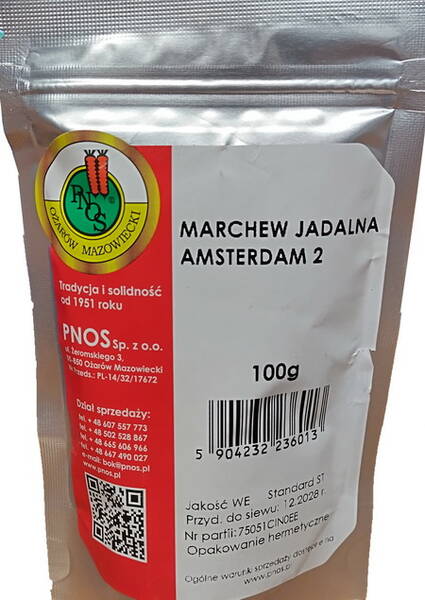Grows best in cultivated, humus, not soaked easy clay loam or sandy loam sols. If the soil is heavy – sprout bad, the root vegetables are short, branchy, split.
An early kind: the crop is harvested 80 days after germination. Root vegetables are cylindrical, 15-17 cm long, tapering with a blunt end. The core is intangible, the flesh is dark red and juicy.
Suitable for fresh consumption and short-term storage.
1,0 g contains approximately 800-1200 seeds.
* Carrots are a widespread vegetable. It is valued primarily for its high content of provitamin A, vitamin B1, B2, PP and a large amount of minerals. Like all vegetables, carrots are more useful for us fresh. This crop requires a well-fertilized light soil with sufficient lime and a deep arable layer.
Carrots do not tolerate direct fertilization with fresh manure, this causes branching and cracking of root crops. Similar signs appear with excessive nitrogen application. Carrots are very cold-resistant, therefore they are sown in early spring or before winter. Seeding rate 0.3-0.5 g / m2. Planting depth 1-2 cm. Row spacing 20-25 cm.
Carrot seeds sprout slowly (15-20 days), so it is useful to sow them together with lighthouse culture (mustard, lettuce). This will allow you to start loosening the soil and removing weeds even before carrots appear, since the formation of a crust on the surface of crops and weeds are harmful to its seedlings.
Seedlings are thinned out as early as possible, leaving one plant at a distance of 4-5 cm, and later varieties - 7-10 cm from each other.
Immediately after thinning, ammonium nitrate (15 g / m2) and boron fertilizers are added to the soil. Do not fertilize later.
In dry weather, crops should be watered. During the period of intensive growth of root crops, watering is limited so that the root crops do not crack from excess moisture.












